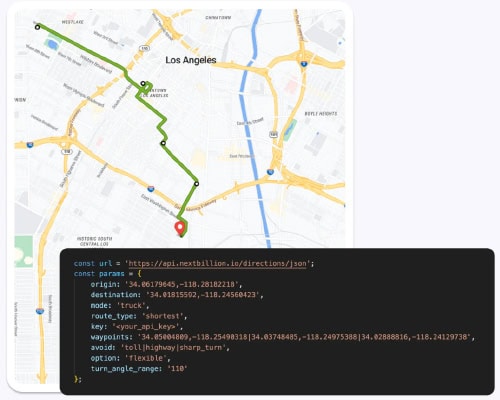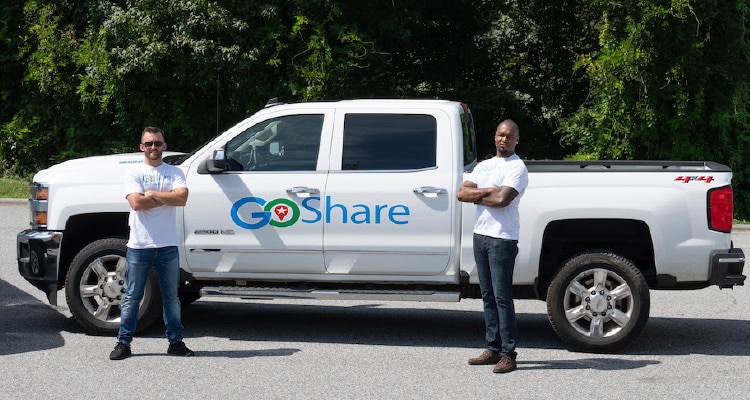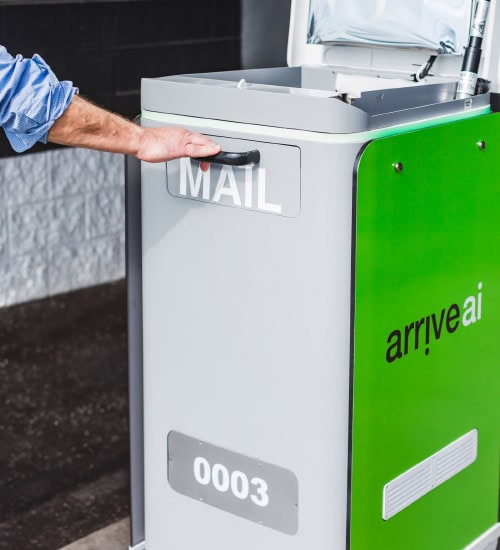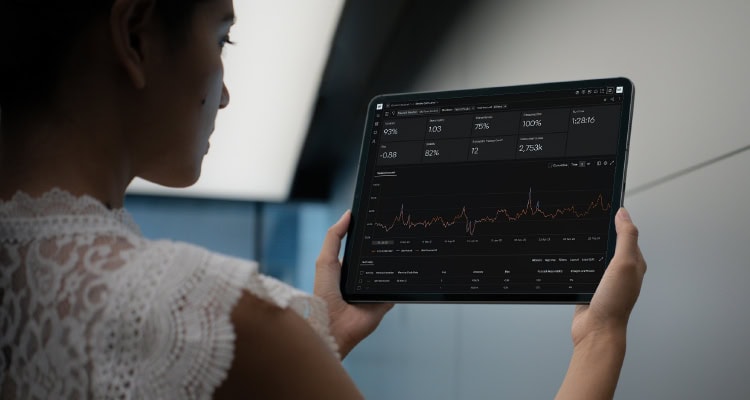Beyond the Shelf: Unpacking the Future of Retail Logistics

Five key advances—from AI to smart mailboxes—are helping retailers adapt to a complex, demanding and evolving market.
In some ways, today’s retail supply chains are unrecognizable from just five years ago. That’s how rapidly new tools and new ways of working are taking root in the field as retailers hustle to take advantage of fresh innovations to meet the challenges of an increasingly complex field—and increasingly demanding customers.
Fortunately, those innovations are making a meaningful, transformative impact on the retail industry, helping it to take a large leap forward in supply chain efficiency and effectiveness. Here’s a look at five key advances that are currently providing a powerful boost to retailers and their logistics partners or that are poised to make a growing impact in the future.
1. AI route optimization

Route optimization tools such as NextBillion.ai help retailers build, scale, and customize location solutions. A dynamic interface visualizes real-time data to optimize routing and geospatial decision-making.
AI route optimization automatically generates efficient routes for multi-stop deliveries and adapts to real-world variables such as traffic, time windows, and vehicle capacity.
“AI route optimization tools are revolutionizing retail logistics and delivering a substantial competitive advantage,” says Gaurav Bubna, co-founder of NextBillion.ai, a location technology provider.
Route optimization tools “have transformed dramatically,” he says. No longer manual, basic planners, they are now highly sophisticated platforms driven by AI.
“Today’s solutions harness powerful machine learning algorithms, seamlessly integrate real-time data from traffic, customer demand and operational systems, and continuously adapt to fast-evolving delivery environments,” Bubna says. “As a result, modern tools automatically respond to on-the-ground changes, ensuring every route is as efficient, reliable, and as responsive as possible.”
AI route optimization tools can optimize vehicle utilization, reduce mileage and save on fuel and labor expenses, resulting in lower operational costs.
In addition, these tools lead to more consistent on-time deliveries, accurate delivery time predictions, and real-time updates, which support high service-level agreements and bolster customer brand trust.
Meanwhile, strategic route optimization accommodates fluctuations in demand, last-minute orders, and complex operational requirements to ensure adaptability as business needs grow and evolve.
“A broad range of leading retailers, delivery companies, and logistics providers worldwide now use route optimization,” Bubna says. “It has rapidly become a best practice, particularly for those in a dynamic space who face rising order volumes and increasing customer expectations.”
NextBillion.ai’s offering, for instance, includes industry-specific optimization, such as a tailored module for retail deliveries. It also allows for the use of proprietary map data, private road edits, and custom routing preferences for business-specific solutions.
In addition, modern optimization solutions are designed to plug into retailers’ existing tech stacks, including enterprise resource planning systems, transportation management systems, customer relationship management systems, and telematics systems.
Meeting Key Challenges
Intelligent routing addresses some key challenges in today’s retail landscape. Route optimization helps retailers remain cost-effective, agile, and scalable in an environment of rising costs, labor shortages, and competitive pressure, as well as fluctuating order volumes and diverse fulfillment channels.
In addition, intelligent routing equips retailers to manage the growing complexity of the field, including omnichannel fulfillment, tight delivery windows, changing regulations and sustainability mandates—as well as demanding customers.
“Meeting expectations for fast, reliable and sustainable deliveries has become essential for brand reputation and customer loyalty,” Bubna says.
2. Crowdsourced delivery

GoShare’s crowdsourced delivery network connects businesses with local delivery professionals and trucks on demand. Its fleet enables fast, flexible last-mile logistics across a range of industries.
Crowdsourced delivery has been around for a while, but the model, which depends on a network of independent drivers to make deliveries, is spreading in influence for retailers that need its particular advantages.
Among their most notable benefits, many crowdsourced delivery providers allow retailers to offer same-day or next-day delivery without operating their own fleet, aligning with modern customer expectations, according to Shaun Savage, CEO and founder of GoShare, which operates in 100-plus markets in 38 states.
“The crowdsourced model can support the delivery of nearly all retail products, from small parcels to furniture and pallets of goods,” Savage says. “Retailers have used a crowdsourced model to support every leg of the supply chain—first mile to middle mile and the last mile. That type of supply chain flexibility helps retailers achieve efficiencies and cost savings.”
And retailers only pay for the deliveries that they need.
“The flexibility extends to retailers having the ability to easily scale up their fleet during peak season and down during slow periods,” Savage notes. “They are also able to tap into a large labor pool on demand without long-term contracts. Many crowdsourced platforms offer real-time driver visibility, which offers a better customer experience at lower operating costs.”
Leveraging the Benefits
Crowdsourcing delivery typically comes with a fresh set of data and analytics that store operations can use to optimize inventory placement and logistics strategy. In addition, giving retailers the capability to ship from their stores “tends to shorten the last mile and limit costs, which has an overly positive impact on customers’ satisfaction,” Savage says.
“In today’s retail landscape, having a modern and speedy delivery solution is a major competitive advantage,” he adds. “Retailers can use their brick-and-mortar footprint combined with crowdsourced delivery to offer a better fulfillment solution for their customers both online and offline.
“It is particularly important for retailers to have comparable delivery options to what is available on the leading ecommerce websites in order to keep market share,” he says. “In a highly competitive retail landscape, a modern supply chain can be the difference between victory and defeat.”
Crowdsourced delivery models are poised for growth going forward, Savage predicts. “We expect the trend of retailers using crowdsourced delivery models to accelerate in the years ahead as they become more reliable and valuable to supply chains,” he says. “The gig economy offers the modern workforce the type of independence that they crave.
“The technology stacks behind crowdsourced companies will use AI and other automations to solidify themselves as efficient supply chain partners,” Savage adds.
3. AI shopping assistants
AI shopping assistants are gaining ground in the retail field as consumers increasingly become more comfortable and fluent with using artificial intelligence. Ecommerce shoppers use the assistants to help them browse online to find, compare, and buy products. Shoppers can use simple descriptions to get help.
The goal is to use accurate responses and “highly personal, proactive assistants” to personalize the shopping experience for each user, according to Jesse Dwyer, head of communications for Perplexity, a San Francisco-based company that provides an AI-powered answer engine.
“Shopping and buying are unique experiences for everyone,” Dwyer says.
AI Shopping vs. Chatbots
AI shopping assistants differ from chatbots, which provide pre-determined answers that are triggered by the words customers use in their searches. In contrast, AI shopping assistants are designed to answer any query and to provide unique, personalized guidance and recommendations based on consumer searches and requests. The goal is to provide a more sophisticated level of help to customers, leading to both more purchases and better service.
Perplexity users, for example, use the company’s Comet browser for assistance with a variety of tasks, including shopping.
“For example, I asked Comet to find and buy me a new sweater. It knows what I want, and I don’t have the time or interest to deal with it,” Dwyer says. “My partner, on the other hand, enjoys scrolling options and imagery shopping more than she does social media.
“It’s a spectrum, and agentic commerce helps every shopper have the best experience for them, while giving brands and merchants a scalable way to have those one-on-one relationships,” he says.
4. Smart mailboxes

Arrive AI’s autonomous last-mile platform enables delivery to a smart mailbox by drone, ground robot, or human.
The rise of ecommerce also has led to increased use of lockers for secure, touchless pickup. Those lockers—or mailboxes—are becoming not only more prevalent but more technologically sophisticated as usage grows.
For instance, Arrive AI, an autonomous delivery network, has developed an autonomous last-mile platform that enables delivery to a smart mailbox by drone, ground robot or human.
Billions of dollars are lost to package theft, incorrectly addressed packages, and damage, notes Dan O’Toole, founder and CEO of Arrive AI. Smart mailboxes have the potential to limit those losses, providing a new element to the challenges of the last mile.
Arrive’s smart mailboxes also include climate control and chain-of-custody measures, and the company’s system integrates with smart home devices such as lighting and security systems.
A Growing Need
For now, automated delivery is available only in pockets across the United States, but as automated delivery becomes more prevalent it will increase the need for smart mailboxes. Arrive was the first to patent a mailbox capable of drone delivery—which the company calls Arrive Points, O’Toole notes.
“One of our partners in India delivers about 200,000 packages a day via drone. When we have our Arrive Points in place there—we hope to have dozens there this calendar year—we’ll have a great use-case for our effectiveness,” O’Toole says.
The addressable market for smart mailboxes is “huge,” O’Toole says. “In the United States alone, there are more than 160 million traditional mailboxes that haven’t been updated since 1858. We expect to continue refining our product as we roll it out.
“At scale, the data collection and additional features—emergency lighting, interaction with household IoT, video and advertising—are immense,” he says. “We see automated delivery as a necessary utility in the future for all consumers, retailers, and businesses.”
5. AI-based demand forecasting

o9 Solutions’ platform, which combines advanced analytics, scenario planning, and intuitive tools, uses AI to drive business planning across the enterprise—from demand forecasting to supply alignment.
The use of AI in demand forecasting is helping retailers and their partners analyze vast amounts of data to make quicker and better-informed decisions. AI-based demand forecasting transforms retail supply chains from reactive to responsive.
“Traditional models rely on historical patterns—as long as the road ahead looks like the road behind you, you may be fine,” says Prashant Bhargava, senior vice president, product management, for the retail-CPG division of SymphonyAI. “These approaches break down when promotions shift, weather hits, or customer demand spikes.
“AI doesn’t just predict, it adapts,” he adds. “It reads signals—from store inventory to external events—as they emerge and adjusts forecasts accordingly. AI-based demand forecasting delivers dramatically higher forecast accuracy, fewer stockouts and leaner, more efficient inventory.”
AI-based demand forecasting supports retailers who are “facing more volatility than ever,” notes Anjali Burkins, senior director of retail strategy, North America at o9 Solutions, a Dallas-based supply chain software company.
“Demand patterns are shifting quickly, influenced by factors such as local events, promotions and social media,” Burkins says. “At the same time, macro-level disruptions such as tariff changes and geopolitical tensions are creating new constraints and forcing teams to respond faster and more precisely. AI-based forecasting helps create a stronger foundation for planning in this environment.”
One common challenge teams face is struggling to pinpoint why they missed or exceeded plans.
“Was it a demand surge in a certain region? A late delivery from a supplier?” Burkins says. “AI helps automate that root cause analysis and turns historical data into insights that are relevant for the next decision cycle.
“Accurate forecasts allow teams to adjust plans earlier and align with supply chain partners,” she adds. “This could mean shifting order volumes, reallocating inventory, or triggering a scenario simulation to evaluate the best course of action. It enables planners to be proactive and collaborative, rather than reactive and siloed.”
A New Way of Working
Warehouse-level AI demand forecasting is in widespread use, while store-level adoption is catching up as retailers “realize that you can’t manage local nuances—customers, weather, traffic, seasonality—with historical averages,” Bhargava says. “The key advantage, however, is the ability to adjust plans and execute quickly across merchandising, supply chain, and stores as conditions change.”
As Burkins notes, “The complexity of today’s environment demands a different way of working—one that brings together data, technology and people to support faster, more coordinated decisions.”
